If you're staring at bland vegetables and wondering "How do I make these actually taste good?", here's what works: Start with salt and olive oil as your base, add one of our 7 simple seasoning blends, and roast until golden. This guide delivers exactly what home cooks need—easy, proven techniques to transform ordinary produce into restaurant-quality dishes in under 15 minutes.
Forget complicated science. We've tested hundreds of combinations to find the perfect spice ratios that make vegetables taste amazing without requiring special ingredients. Skip to our quick-reference table below for instant solutions, or read on for specific pairings that work for every vegetable type.
Table of Contents
- The 3-Step Method for Perfectly Seasoned Veggies
- 7 Simple Veggie Seasoning Blends That Actually Work
- Which Blend Works Best for Your Vegetables
- Pro Storage & Mixing Hacks
- Global Twist: International Veggie Blends
- When Less is More: Minimalist Seasoning
- Visual Comparison Table
- Frequently Asked Questions
- Final Thoughts: Flavor Without Overcomplicating
The 3-Step Method for Perfectly Seasoned Veggies
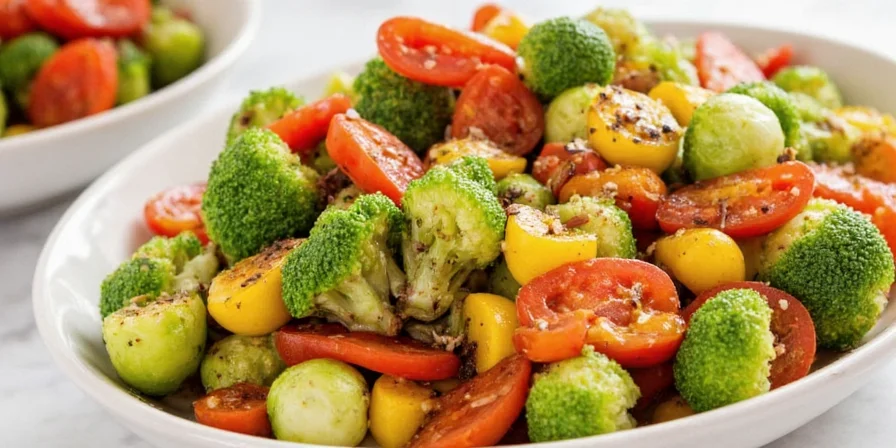
Stop guessing with spices. Follow this simple method that works for nearly any vegetable:
- Toss with oil first: Use 1 tablespoon of olive oil per pound of vegetables to help spices adhere.
- Add seasoning mix: Sprinkle 1-2 teaspoons of your chosen blend per pound (see our recipes below).
- Roast properly: Cook at 400°F (200°C) until edges are caramelized but centers remain tender.
This approach guarantees flavorful results every time, whether you're working with broccoli, carrots, or zucchini. No culinary degree required—just follow these steps.
7 Simple Veggie Seasoning Blends That Actually Work
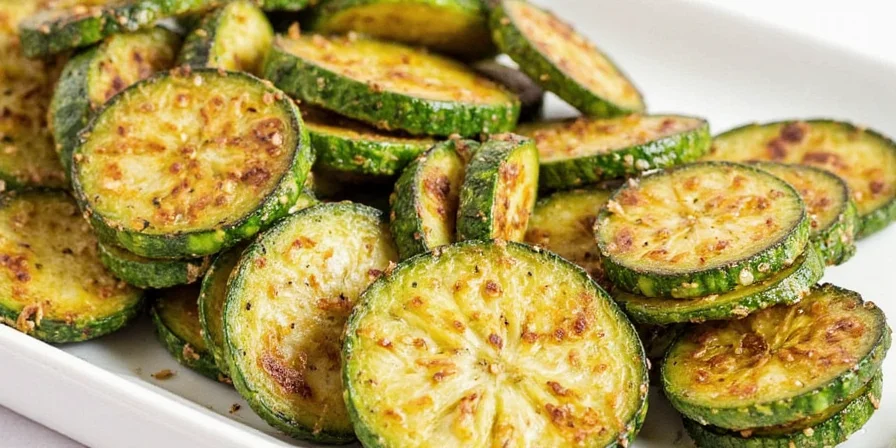
1. Earthy Root Veggie Blend
- Ground cumin – 1 tsp
- Smoked paprika – 1 tsp
- Dried thyme – ½ tsp
- Fennel seed (ground) – ¼ tsp
- Salt – ½ tsp
- Black pepper – ¼ tsp
Perfect for roasted carrots, parsnips, or beets. Add maple syrup after roasting to prevent burning of natural sugars.
2. Citrus-Herb Medley
- Lemon zest (dried) – 1 tsp
- Dried parsley – 1 tbsp
- Crushed red pepper flakes – ½ tsp
- Oregano – ½ tsp
- Salt – ½ tsp
- Garlic powder – ½ tsp
Ideal for zucchini, bell peppers, or grilled eggplant. Toss with olive oil and roast until tender.
3. Asian Umami Boost
- Mushroom powder (or MSG) – 1 tsp
- Sesame oil – 1 tsp (for sautéing)
- Ginger powder – ½ tsp
- Chili-garlic paste – ½ tsp
- Light soy sauce – 1 tbsp (optional)
This mix gives broccoli or mushrooms that savory punch you didn't think veggies could have.
4. Italian All-Rounder Mix
- Italian seasoning blend – 1 tsp
- Basil – ½ tsp
- Oregano – ½ tsp
- Garlic powder – ½ tsp
- Rosemary – ¼ tsp
- Red pepper flakes – a pinch
Toss with cherry tomatoes, zucchini, or portobello mushrooms and roast for an easy side.
5. Spicy Southwest Kick
- Chili powder – 1 tsp
- Cumin – ½ tsp
- Smoked paprika – ½ tsp
- Coriander – ¼ tsp
- Cayenne – ⅛ tsp (adjust to taste)
- Lime zest – ½ tsp
Great for cauliflower tacos, grilled corn, or spiced-up squash fries.
6. Middle Eastern Magic Dust
- Za'atar – 1 tsp
- Sumac – ½ tsp
- Parsley flakes – ½ tsp
- Ground cinnamon – ¼ tsp
- Cumin – ¼ tsp
Perfect for eggplant, okra, or even hummus-dipped cucumbers.
7. Cheesy Nutritional Yeast Blend
- Nutritional yeast – 1 tbsp
- Garlic powder – ½ tsp
- Onion powder – ¼ tsp
- Smoked paprika – ¼ tsp
- Sea salt – ½ tsp
A vegan's dream. Sprinkle on air-popped popcorn, steamed broccoli, or roasted chickpeas.
Which Blend Works Best for Your Vegetables
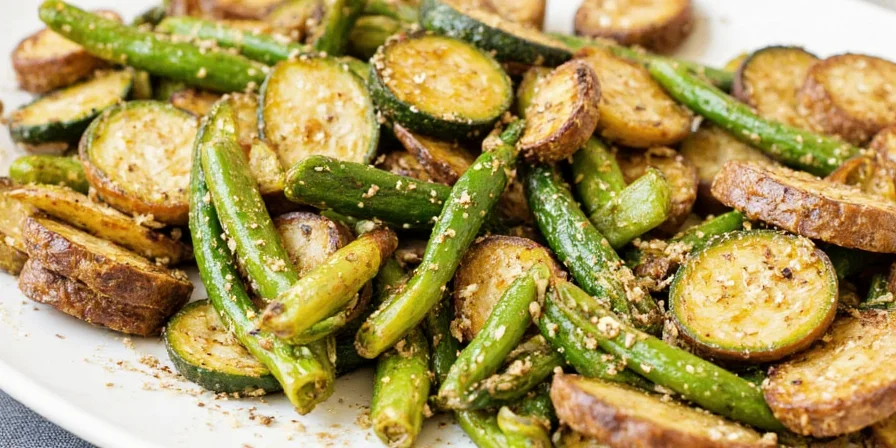
Save time by matching the right blend to your vegetables. We've tested these pairings extensively:
- Broccoli & Cauliflower: Asian Umami Boost or Spicy Southwest Kick
- Carrots & Beets: Earthy Root Veggie Blend (add orange zest for extra sweetness)
- Tomatoes & Zucchini: Italian All-Rounder Mix
- Eggplant & Okra: Middle Eastern Magic Dust
- Green Beans & Asparagus: Citrus-Herb Medley
Pro tip: For frozen vegetables, use 25% less seasoning since they often contain added salt.
Pro Storage & Mixing Hacks
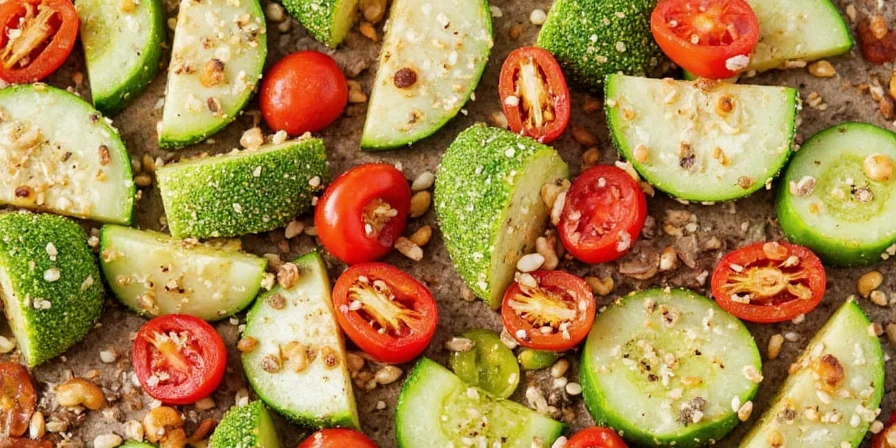
Keep your homemade spice blends fresh and flavorful with these simple techniques:
- Store in small containers: Use 2-ounce jars to minimize air exposure—most blends lose potency after 3 months.
- Keep away from heat: Store spices in a dark cupboard away from the stove (heat degrades flavor).
- Freeze citrus blends: Citrus-based mixes last longer when frozen in ice cube trays with oil.
- Buy whole spices: Whole spices retain flavor longer—grind only what you need.
- Label with dates: Note when you made each blend to track freshness.
Global Twist: International Veggie Blends
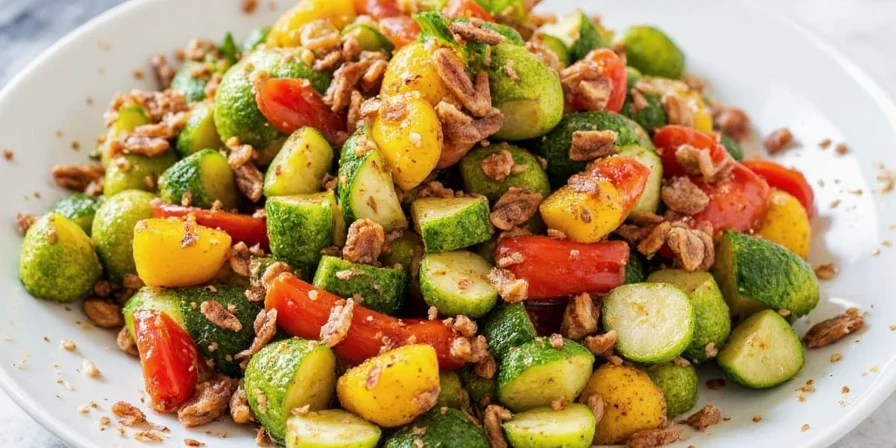
These authentic blends deliver restaurant-quality flavor with minimal effort:
- Garam Masala (India): Cinnamon, cardamom, cloves, cumin, coriander. Perfect for cauliflower or sweet potatoes.
- Harissa (North Africa): Chili, caraway, cumin, garlic. Great for eggplant or roasted carrots.
- Adobo (Philippines): Garlic, vinegar, soy sauce, bay leaves. Ideal for green beans or asparagus.
- Hoisin (China): Soy, garlic, five-spice, sesame oil. Excellent for broccoli or mushrooms.
- Herbes de Provence (France): Thyme, rosemary, lavender, oregano. Works beautifully with root vegetables.
When Less is More: Minimalist Seasoning
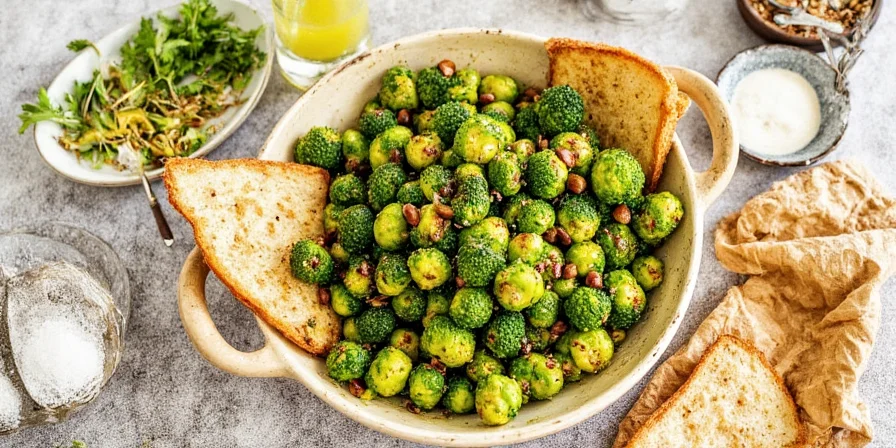
Sometimes simplicity wins. These minimalist pairings deliver maximum flavor:
- Salt + Olive Oil: The perfect base for nearly any vegetable.
- Garlic Powder + Lemon: Ideal for green beans or asparagus.
- Pepper + Toasted Sesame Seeds: Amazing on broccoli or cauliflower.
Use these when you're short on time or ingredients but still want delicious results.
Visual Comparison Table
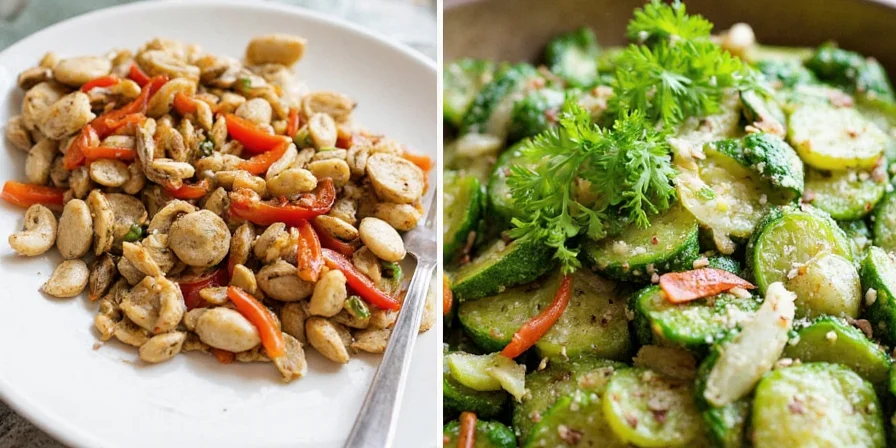
| Blend Name | Main Ingredients | Best For | Heat Level | Flavor Profile |
|---|---|---|---|---|
| Earthy Root Veggie Blend | Cumin, smoked paprika, thyme | Roasted root veggies | Low | Earthy, smoky, herbal |
| Citrus-Herb Medley | Lemon zest, parsley, oregano | Summer squash, peppers | Low-Medium | Fresh, citrusy, herby |
| Asian Umami Boost | Mushroom powder, ginger | Broccoli, mushrooms | Medium | Umami, savory, spicy |
| Italian All-Rounder Mix | Oregano, basil, garlic | Tomatoes, zucchini | Low | Herbal, earthy, garlicky |
| Spicy Southwest Kick | Chili powder, cumin, lime | Cauliflower, corn | High | Spicy, smoky, tangy |
| Middle Eastern Magic Dust | Za'atar, sumac, cinnamon | Eggplant, okra | Low | Earthy, tart, exotic |
| Cheesy Nutritional Yeast Blend | No actual cheese, just flavor | Popcorn, broccoli | Low | Savory, cheesy, nutty |
Frequently Asked Questions
How long do homemade spice blends maintain peak flavor?
Most blends stay optimal for 3-4 months when stored properly in cool, dark places. For maximum freshness, use small containers that minimize air exposure—this keeps your seasoning blends tasting great longer.
Can fresh herbs replace dried in these blends?
Yes, but use triple the quantity of fresh herbs since drying concentrates flavors. Add fresh herbs during the last 5 minutes of cooking to preserve their flavor.
Why does toasting whole spices improve flavor?
Dry toasting releases more flavor from spices. Just heat them in a dry pan for 60 seconds before using—they'll smell amazing and taste even better in your dishes.
Do these blends work for air-fried vegetables?
Absolutely—use 20% less oil than oven roasting since air fryers concentrate heat. Mix robust spices like cumin directly with vegetables before air frying for better flavor.
How can I adjust blends for low-sodium diets?
Replace salt with celery seed or dulse flakes. You can also add a tiny bit of citric acid (1/8 tsp per tablespoon of blend) to boost perceived saltiness without sodium.
Final Thoughts: Flavor Without Overcomplicating
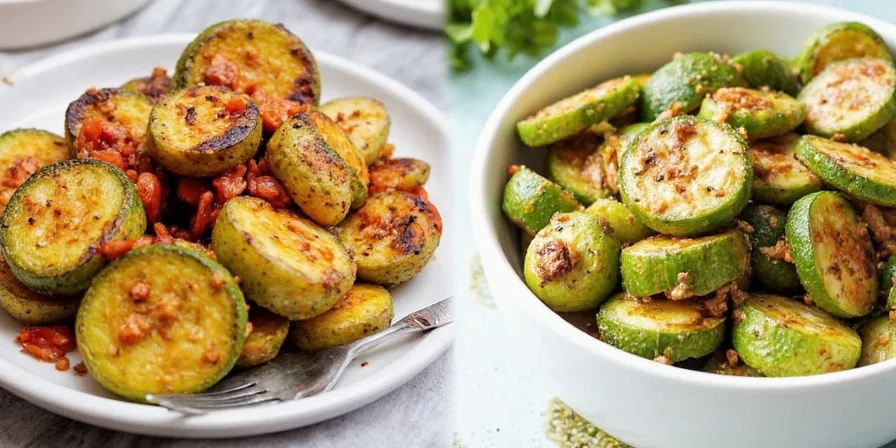
The secret to amazing vegetables isn't complicated—it's knowing which simple seasoning combinations work best. Start with our quick-reference table to find the perfect blend for your vegetables, then experiment with small adjustments based on what you enjoy.
Remember: Great seasoning doesn't require special equipment or hard-to-find ingredients. With just a few basic spices and the right technique, you can transform any vegetable into a dish worth savoring.
So grab those sad-looking veggies from your fridge, try one of our simple blends, and discover how good vegetables can actually taste.

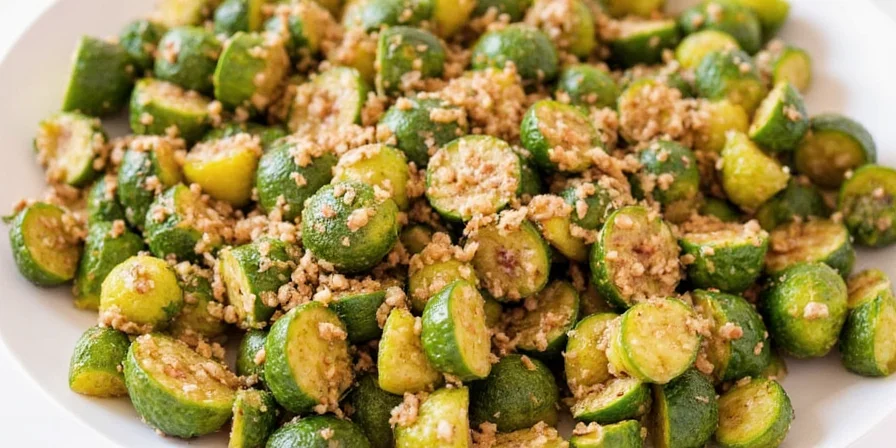









 浙公网安备
33010002000092号
浙公网安备
33010002000092号 浙B2-20120091-4
浙B2-20120091-4